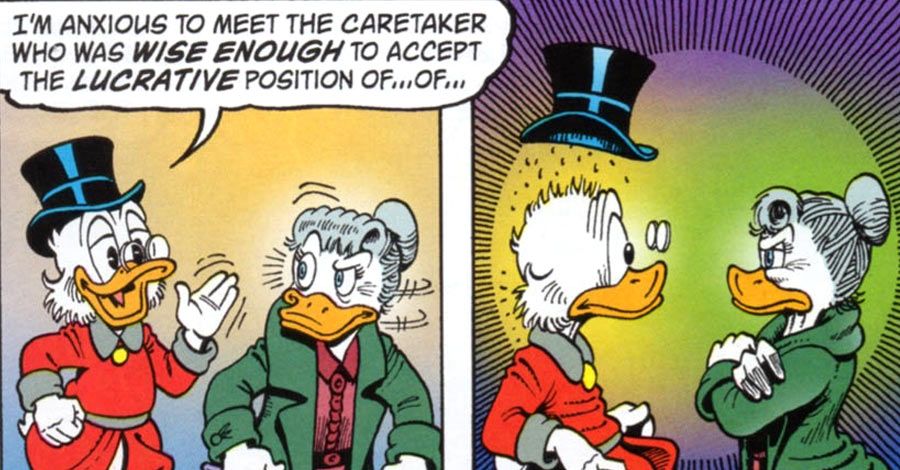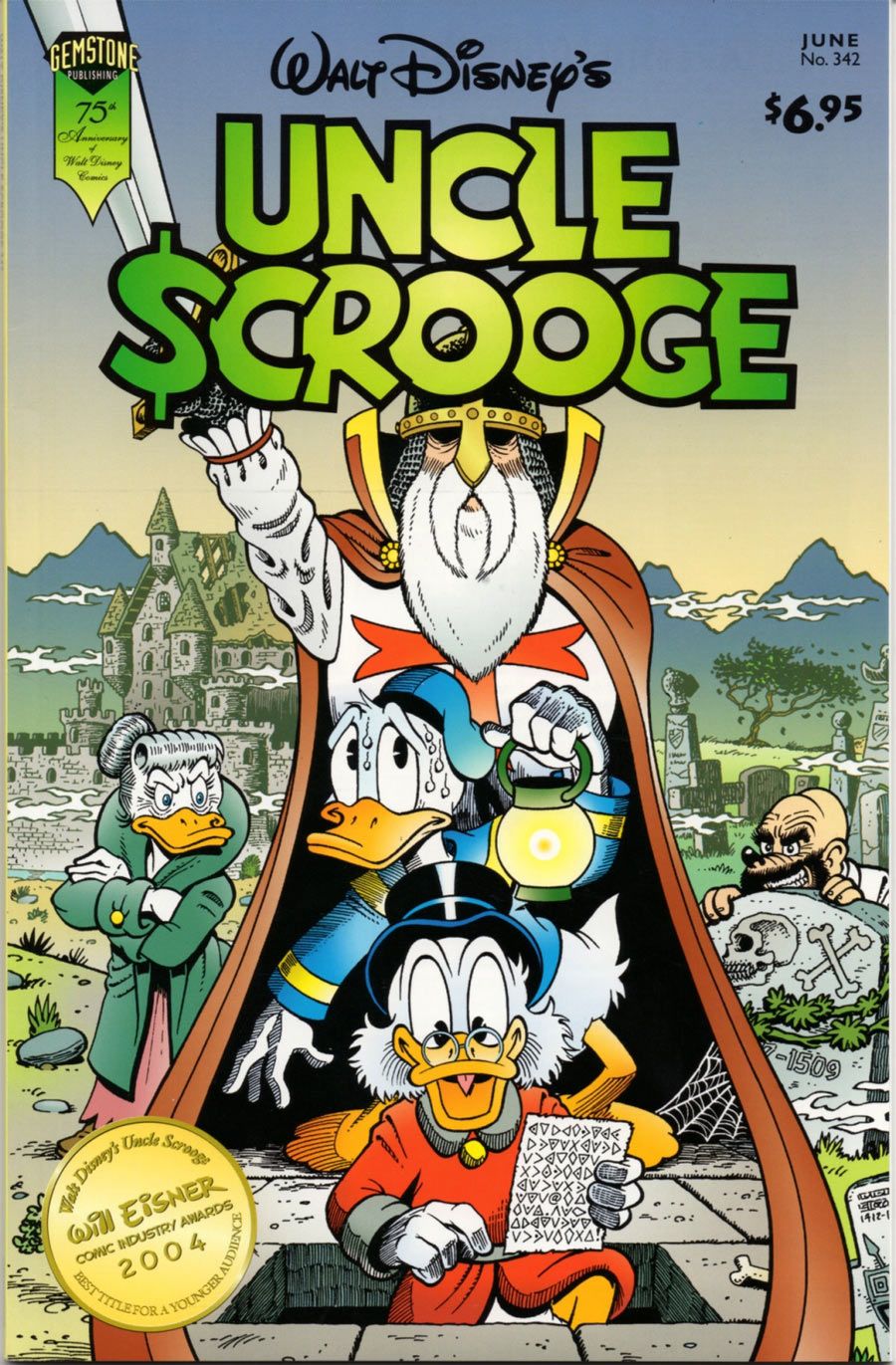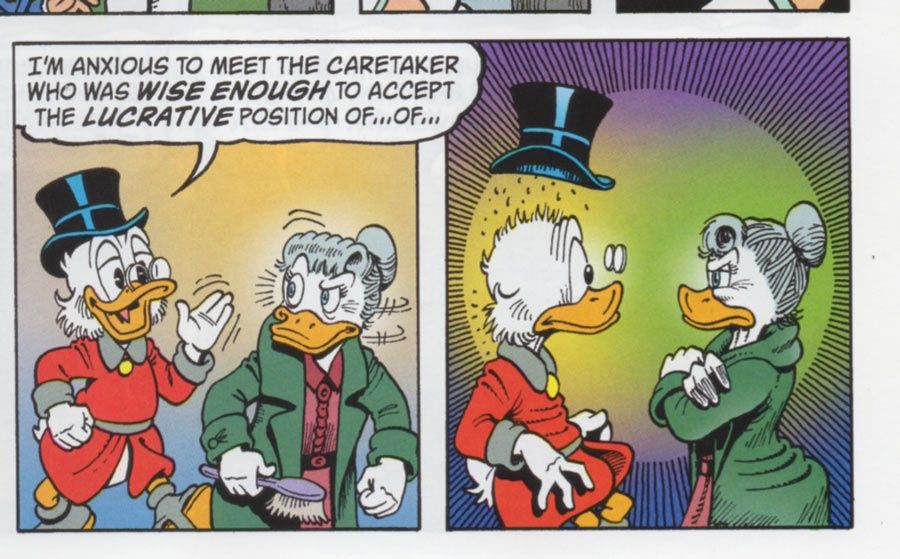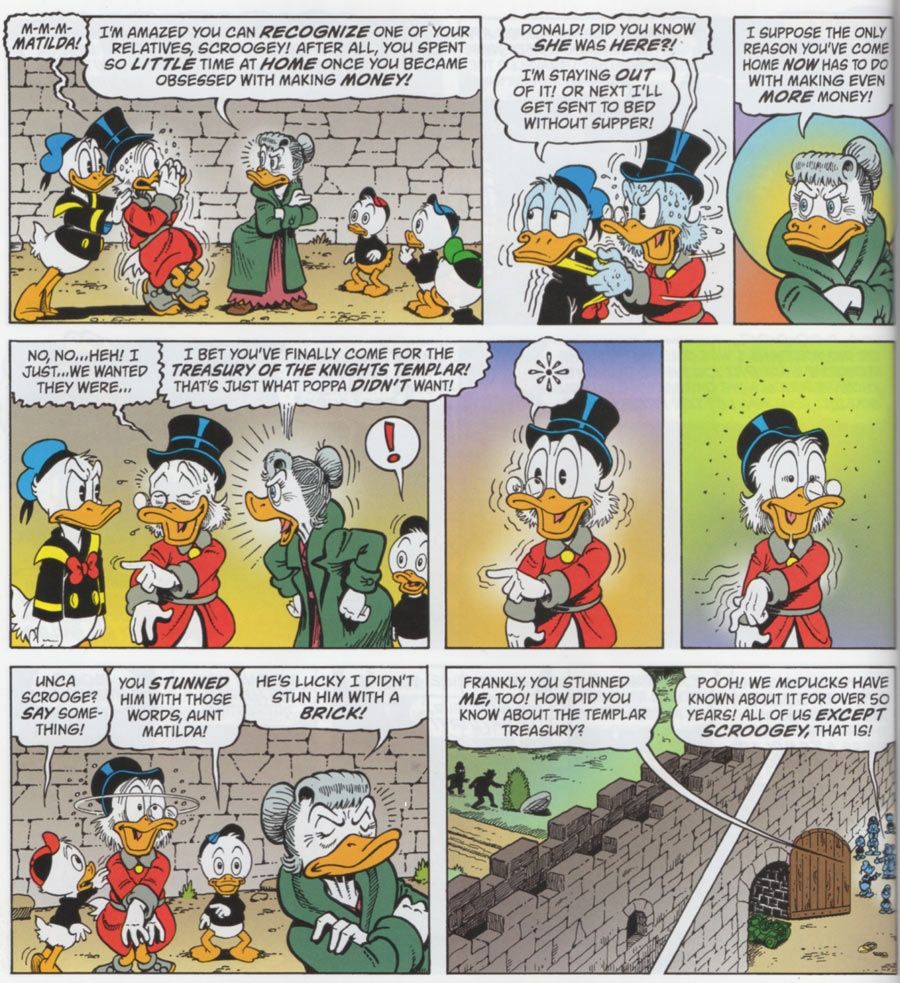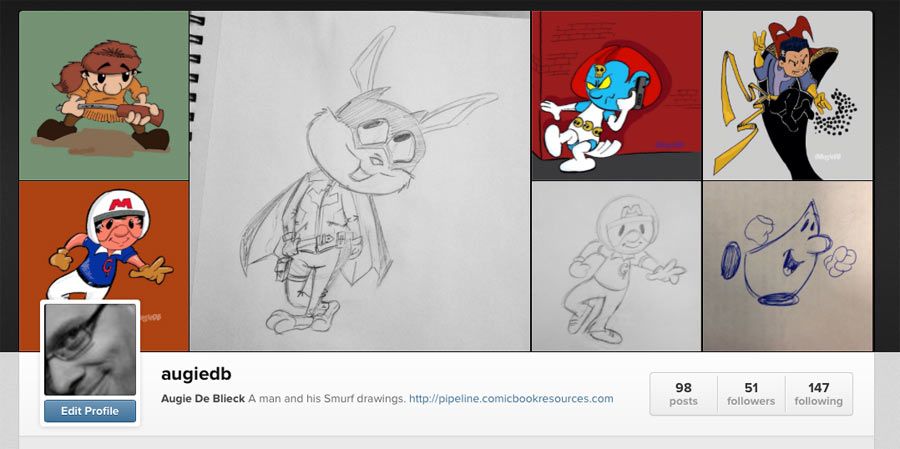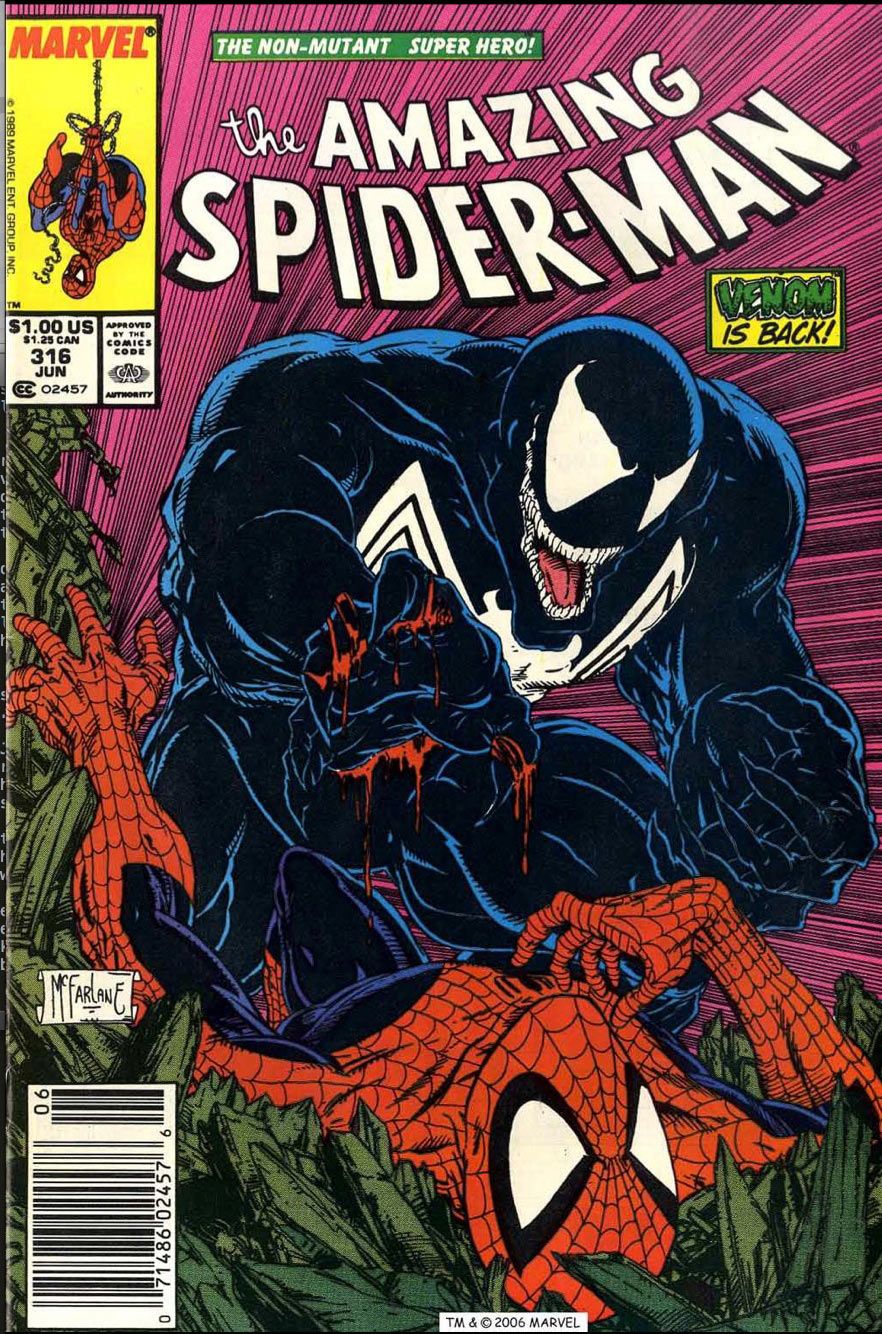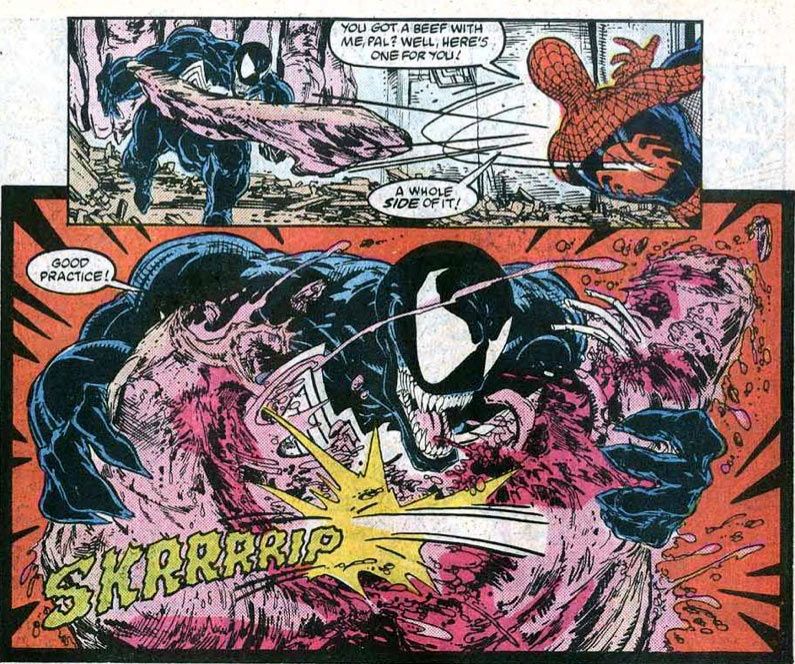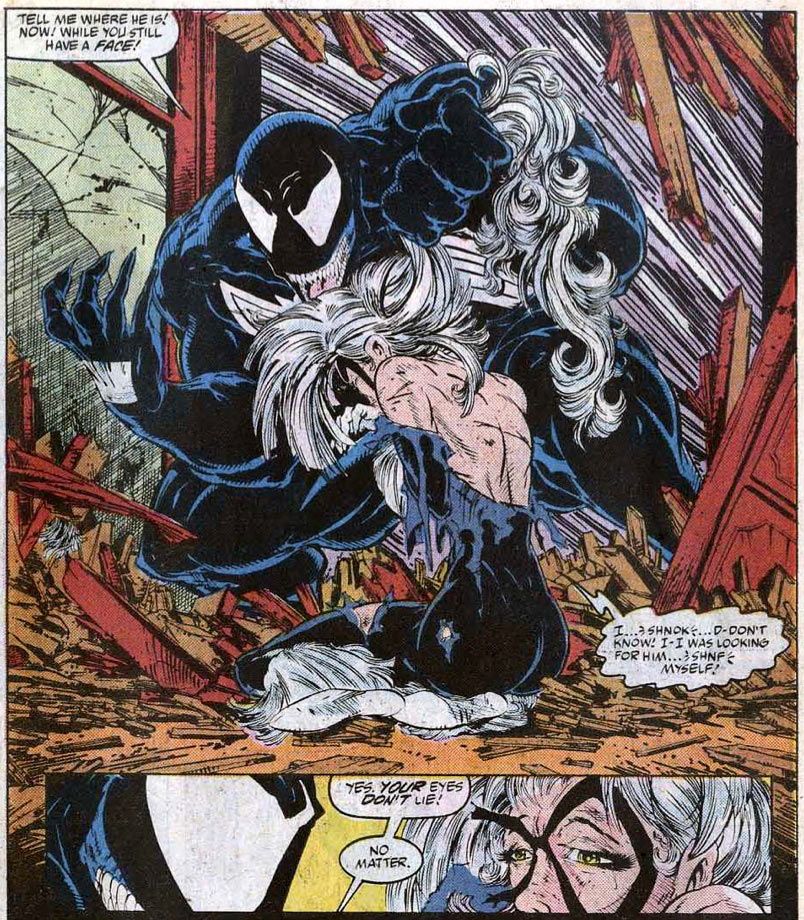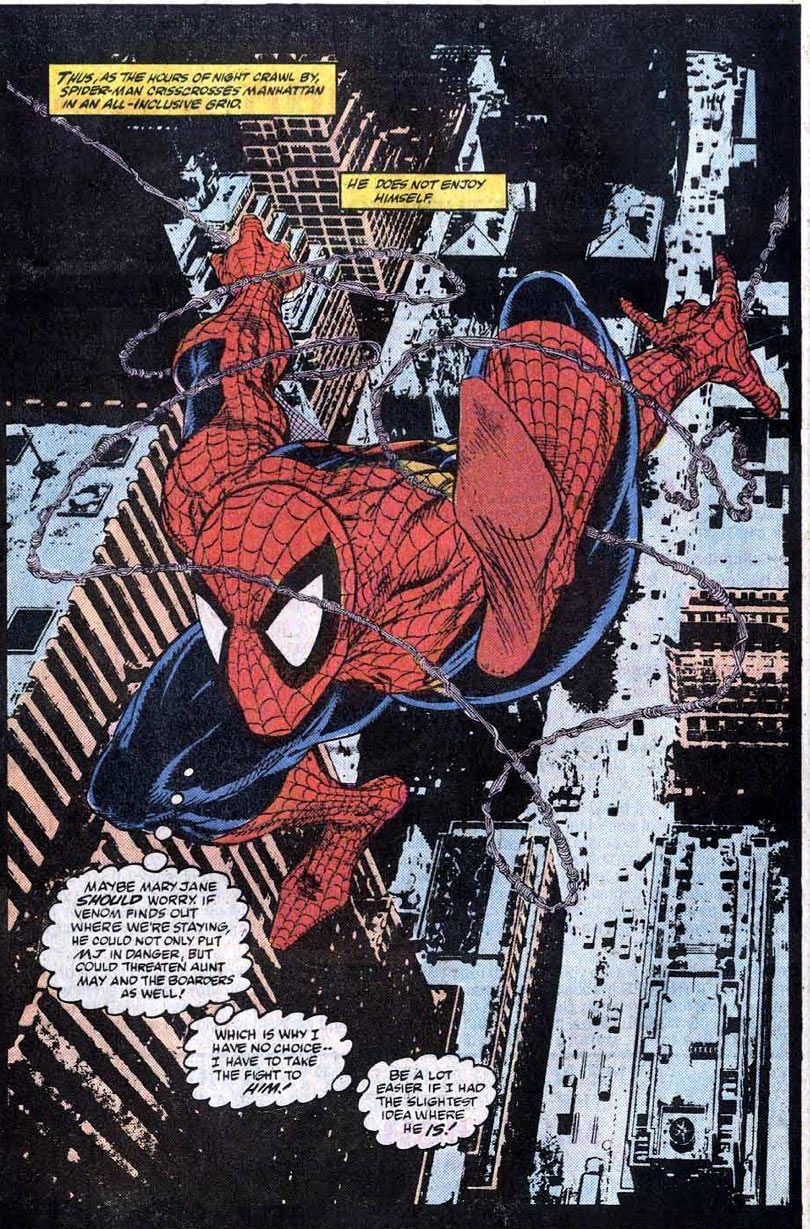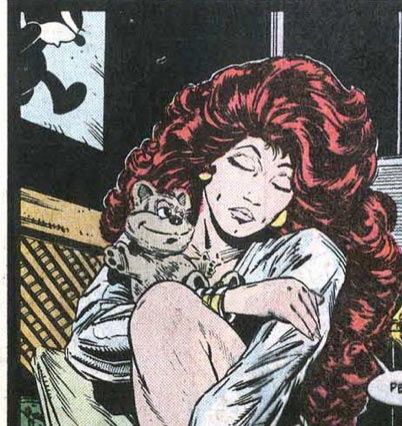AN EMOTIONAL DUCK
Don Rosa is, sadly, retired from making Duck comics. We'll never see another new Duck story from him again. This is one of the saddest things in modern comics. I love that body of work. I've bought it multiple times. I'll be happily buying it again when Fantagraphics reprints it this fall. Love, love, love. "The Life and Times of Scrooge McDuck"? If I had a desert island list of ten books to bring with me, it would have a spot, easily.
But Rosa is retired now, and we'll get nothing new. This is true, of course, unless you find a story you never read in the first place. It slipped through the cracks for whatever reason. Then, ten years later, you have a NEW DON ROSA STORY to read.
You see where this is leading, right?
In my ongoing attempts to clean up my comics collection and explore 25 years of comics sitting in longboxes, I keep stumbling across books I forgot I had, didn't know I had, books I loved and would love to reread again, and happily things that can be linked to modern times in new ways. Sometimes, things are worth taking a second look at. I've changed as a reader and a critic over the course of time.
This week, I give you "Uncle Scrooge" #342, with the Rosa story, "The Old Castle's Other Secret." Given enough research, Rosa devised a story that put the Knights Templar's accumulated treasures underneath the McDuck family castle in Scotland. This is the story of how Scrooge, Donald and the three nephews travel to Scotland to unearth the treasure. It's a great mystery, filled with all the touchstones that that kind of story should have. There are codes to be solved, traps to be avoided, walls to climb and holes to walk into. And, of course, there's a ne'er-do-well who's after the same thing at the same time and threatens to destroy the good time of adventuring and puzzle solving.
That's the gist of the story, and I don't want to bother talking about any of it. It's great stuff. Rosa's meticulous attention to detail shines through in the art. Todd Klein's lettering helps maintain the same feel for reading as the "Life and Times of Scrooge McDuck" had. Susan Daigle-Leach's coloring was the look of Duck comics at the time. It was all Gladstone's best talents pooled together for a grand story.
But the thing that will hit you the hardest in the book is the more personal stuff. You may remember from "Life and Times" that Scrooge's two sisters didn't like what he was becoming during his rising riches, and walked away from him. He hasn't seen them in more than two decades at the time of this story. Guess what? Scrooge's sister -- and Donald's aunt -- Matilda is now in charge of the castle. And that's where Scrooge is visiting.
The clash is fierce, funny, and everything you might have asked for, but more. The "more" part is where that arguing masks something deeper: two siblings who love each other and want to be loved by each other, but who need to air their grievances, explain themselves, and be honest with each other to get over the 25 year separation that has driven them apart.
Yes, this is in a Duck book.
It's a great close to certain storylines from "Life and Times" without being a direct sequel. The events from that series are referenced a few times to explain the fight between the siblings, not flinching away from showing Scrooge's lowest moments on the road to riches. The bulk of the story is about his new adventure, with some gags and character bits happening due to Scrooge's poor relationship with his sister. (Every time she calls him "Scroogey," I smile for a reason I don't quite understand.) And then, in the last handful of pages when the adventure is over and Matilda and Scrooge have a moment to talk --
I don't want to give away the ending, and many may think it's just a tad bit too happy, but I like Uncle Scrooge. I want him to be happy. I can't help it. What Don Rosa does here is put a button on Scrooge's life in a way that allows him to be truly happy without having to show that "weakness" to Donald and the boys. Many of Scrooge's self-doubts, insecurities, and worries are put to rest on these pages. Many of the things we know about Scrooge but that might not be spelled out in his every appearance, are brought to bear.
If you've read "Life and Times," I think this one, though a fine adventure on its own, deserves to be part of that canon for just those pages at the end between Matilda and Scrooge.
You may note that Scrooge's other sister, Hortense, is not in the book. She's not mentioned at all. Rosa mentions this in his essay introducing the story. It would be too awkward explaining away Donald's mother's absence for these years, so it's just left out. It's one of those things that might very well be untouchable. And if Don Rosa can't find a good way to explain that relationship, there aren't many people who possibly could.
INSTAGRAM FOR COMICS ART, OR "SOCIAL MEDIA GONE AWRY"
I've become an Instagram addict in recent weeks. It's a great source of artistic inspiration. I've filled my feed with animation artists, character designers, video game folks, and a smattering of comic artists. Every time I open the app, it's an easy-to-browse stream of new images to enjoy and be inspired by.
Not that long ago, I attempted to do this "stream of art" idea in Feedly with a lot of RSS feeds from Tumblr and people's personal blogs. It didn't work out so well. It was not organized well enough to enjoy it. Different RSS feeds would impose different limitations. Some would not include the art, just the text. Some would have the art at a small size to encourage you to click through. Some would be reblogging other art that I wasn't interested in, or other pictures that weren't art. Scrolling to the middle of images annoyed me. It annoyed me enough that I stopped looking with any regularity.
Instagram is a great way to get around all that. Yes, the images are small because they're all on my phone. The square aspect ratio is limiting for some. But the tradeoff is easily made when I have a stream of new art all the time that I can scroll through and not worry about seeing ten different formats that might require a further click or scroll to get through. Instagram's recommendation engine (under the "Explore" tab) isn't perfect, but I have found lots of new artists -- including many Disney animators -- to follow from there. That's all I need.
I post a lot of my art there now. It's gone beyond just Smurfs, but not by much. I don't use filters beyond the Inkwell one that's purposefully made to show black and white art in the best light. The rest of the filters don't work well with art, let alone the photographs they were made for.
There are some things I don't understand about Instagram culture, though. If you follow the sound internet advice of "Don't Read the Comments", this won't bother you. I can't help myself, though.
Why do people like to artificially inflate their follower numbers? I get that social networks often gamify these things. People like to have bigger numbers. But it reminds me of Twitter; people who have 10,000 followers probably only have half that. The other half are the bots desperately looking for attention by following anyone who mentions a specific keyword, hoping they follow back.
The attention economy on Instagram gets even more desperate. Users there want to trade "likes for likes", or "follows for follows". Doesn't the latter just pollute your timeline with stuff you might not be interested in? And doesn't the former become meaningless, since someone is just giving you a like so you like them, but it's all just meaningless and a facade? Wouldn't you rather have an accurate number of people who are actually interested in you?
Yes, social media is a lot like high school, isn't it?
The worst example I've seen came from a person who commented on one of my images, telling me I should enter it in their contest. What's their prize if I "win" this contest? They'll follow me from 20 different Instagram accounts that they control.
Lies, damned lies, and statistics. All over again.
I'm impressed by the animators I've found who have tens of thousands of followers, but then I also wonder what percentage of that number is made up of real people?
I'm annoyed whenever an obvious spammer follows me, because it means my follower count is less useful or truthful. I know I don't really have 1500 people following me on Twitter, for example. Thanks to Twitter's recently added analytics page, I now know that my average tweet is only read by 200 - 300 people. Are those other 1200 people not reading Twitter every day? Possibly, but I think just as large a number are accounts that aren't real individual people reading Twitter streams. They're comic books following me to try to get my attention. They're random websites or podcasts or Kickstarter projects that think I'll automatically like them if they like me. Sadly, there are people who still believe that you should automatically follow anyone who follows you, thus promoting this insipid idea.
I used to automatically report those followers as spam, but I couldn't keep up and just resigned myself to a Twitter following much like all other public social networks: filled with liars and promoters and spammers with a few 'friends' inbetween. I'm honest with myself. I know I only have a few hundred people who might actually read what I say, unless it's retweeted by someone with a bigger audience. Then, the hits can multiply. (One recent tweet was retweeted 30 times and had over 2500 views.)
The good news is, most Instagram comments that I've seen aren't abusive and rude. (I'm only looking in the art world. I can only imagine the comments for any selfie from a pretty girl. I fear enough for humanity that I don't look at those comments.) They're just desperate for attention and immature. ("I love your art. Follow me!") Either way, avoid at most costs. Granted, Instagram's ugly tacked-on commenting system makes that easy to do.
Give it a try. If you're looking for artistic inspiration, follow some artists and enjoy flipping through their works every day. There's some inspiring stuff out there. I can get you started with a short list of some of the feeds I'm following:
Comic Book Folks:
- Mahmud Asrar
- J. Scott Campbell
- Becky Cloonan
- Jamal Igle
- Ken Knudsten
- Adam Kubert
- Jim Lee
- Todd Nauck
- Ryan Ottley
- Andrew Robinson
- Chris Samnee
- Doc Shaner
- Cameron Stewart (like his Tumblr, but without the other links built in)
- Marcio Takara
- Skottie Young
Animators, designers, art students, etc.:
- Pernilleoerum
- HollieHibbert
- shaneglines
- BabsDraws
- cassiesoli
- markjpage (Disney Imagineer)
- mrvinceaparo
- JustALittleBitArtsy
- Snarkies
- EricScales13
- KendraCreature
- AmyMebberson (awesome for Disney princess stuff)
- BrittMysersArt
- BriannaCherryGarcia
- LouieDelCarmen
- AdamDix
- LexiSketch
- DavePimentel
- IniMeitiel
- ElizabetVukovic
- GabeGnzlz
That ought to get you started...
"THE AMAZING SPIDER-MAN" #316: "Dead Meat"
Venom is back in town, and Spider-Man plans to take the fight to him.
Two people are looking for Spider-Man in this issue. The first is the Black Cat, who has returned to the city to reunite with her old lover pal, Peter Parker. She's been gone for so long, though, that she doesn't know he's married. She uncovers that when she runs into Venom, who is also looking for Spider-Man. He beats up the Black Cat pretty good and then skulks off.
Peter, hearing from Mary Jane that Vanom is back in town (because she felt a chill), aims to take the fight to Venom first, so as not to put Aunt May in danger. As soon as he gives that up, of course, Venom appears and a fight is had. This one involves a warehouse full of butchered meat, where a dunking with blood and guts sets Spider-Man off into dumping a lot of stuff on Venom's head before running away. And by running, of course, he goes against the very reason he went out looking for Venom in the first place. So it is, then, that Venom discovers Peter's change of address forms and knows where to find him. More on that in the next issue...
David Michelinie pushes hard on Venom's dual nature as a super strong villain with a mad hate on Peter Parker, off-set by a certain noble integrity. He specifically doesn't bring more harm to people once he believes them. In the opening scene, a "derelict" encounters Venom, who only lets him live after he can look him in the eye and be honest that this would be their secret. And when Venom comes across Black Cat later in the issue, he lets her live only because he believes that she doesn't know where Peter is. He can see it in her eyes. Granted, he smacked her against the wall, tore her costume in half, and left her a quivering mess, but he didn't kill her because she was honest with him.
Aww, what a nice guy.
He was so popular, they gave him his own series and everything. (Everybody remembers "Lethal Protector," right?)
In the "civilian" life, Mary Jane's career is still stalled out, as all her modeling gigs are getting canceled at the last minute. We can all see Jonathan Caesar's role in this one coming right? At the Daily Bugle, J. Jonah Jameson is only buying Spider-Man pictures from a new photographer who share's JJJ's hatred for the webcrawler. Peter is forced to work around those restrictions to find a profitable angle on his business as a freelancer. Even with living "at home," the Parkers are being squeezed financially at both ends.
Todd McFarlane is at ease in this issue. There are only three pages out of the 22 in the issue where there isn't a costume present. He has a lot of characters to draw, but never more than two of them at a time in a given scene. It gives him room to have a splashy and sexy introduction to the Black Cat, as well as some scary Venom panels and some classic shots of Spider-Man swinging through the city. We can never get enough of those, thankfully.
On a personal note, I can remember reading this issue for the first time in trade paperback format. There was a Spider-Man/Venom trade paperback that Marvel published after this storyline collecting the original Venom storyline from issue #300 alongside this one. I picked it up at a spinner rack at a Waldenbooks at the local mall by me. (Kids, ask your parents. Hint: Remember Borders? That was like Waldenbooks, before book stores got very large. Both those stores are now owned by Barnes and Noble.) Even before this Omnibus collection or the random back issues I was able to pick up along the way, I had memorized these stories inside and out from reading them over and over again in that book. Such was the effect Todd McFarlane had on me.
Felix Watch: He's there, pacing back and forth on the wall of the room Mary Jane and Peter share at Aunt May's place. He's also a stuffed animal Mary Jane is cuddling. Did she bring that with her from their upscale condo? Or was that a leftover friend of Peter's from his childhood?
Next issue: Spider-Man vs. Venom! Aunt May and The Thing! Peter in his Underoos! It's a classic!
PIPELINKS AND ONE-LINERS
- CBR published an interview with Don Rosa, the "Drop Everything and Watch This Now" video of the week. Long time dedicated Rosa fans won't hear too much new in here, but it is entertaining. Anyone with a more casual relationship to the material or Rosa as the creator will learn a lot.
- In "Walt Disney's Comics and Stories" #666 (published a decade ago), Gemstone Publishing included a legendary Italian parody of "Dante's Divine Comedy" starring a large cast of Disney Ducks, Mice and more. Fitting.
- At one point in the 1970s, Moebius and Morris redrew each other's comic. We have Morris redrawing "Blueberry" and Moebius redrawing "Lucky Luke." It's just as cool as it sounds.
Twitter || E-mail || Instagram || Pipeline Message Board || VariousandSundry.com || AugieShoots.com || Original Art Collection || Google+

